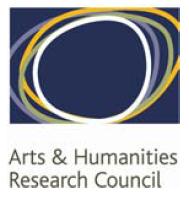Leo Webley - Leverhulme Research Associate, University of Reading
Modern borders and the prehistory of northwest Europe
The Prehistory of Britain and Ireland in their European Context is a five-year research project based at the Universities of Leicester and Reading, which aims to reassess the relationship between these islands and the near Continent from c 5000 BC to the beginning of the Roman era. The results of recent development-led fieldwork from northern France, the Low Countries and western Germany are being systematically recorded, using unpublished 'grey literature' reports as well as published sources. A key issue faced by this project is how far the observed geographical patterns in the data reflect the activities of modern archaeologists rather than those of prehistoric people. This paper will discuss the ways in which differing research traditions, legislative frameworks and fieldwork techniques across northwest Europe influence our understanding of prehistory, and how these biases can be redressed by cross-border research.
To see Leo's paper please click here. |
Sophie Hueglin - Archaeologische Bodenforschung Basel-Stadt, Switzerland
Archaeological co-operations across borders in the "Europe of the regions": taking a closer look at four examples from Basle and Lake Constance
How do archaeologists work together today across borders in Central Europe: how do they plan, finance and lead their common projects? What problems do they face and how do they solve them? What could be done to enhance cooperation? As part of the final paper of their degree (MAS) in culture management at the University of Basel three archaeologists – two from Switzerland and one originally from Germany – have looked at four examples of recent cross-border co-operations in Archaeology. Two of the projects studied concerned the region of Basle and the other two the neighbouring region of lake Constance. Two projects launched exhibitions, which were to be shown in different locations, the other two co-operations organised large excavations with research projects, exhibitions and publications to follow. All four projects were analysed according to criteria of project management and interviews were led with the key players involved. The projects were all successful in different ways, and each faced problems which seemed to be rather typical for the regions than for the type of the project. In each case the forms of interaction between the participants and the public was also very different. Other regions and projects could profit from similar analysis of their cross-border co-operation.
To see Sophie's presentation please click here. |
| John Hammond - Associate lecturer at the University of Kent and an Honorary Research Fellow
Cross-channel contact in the Bronze Age… better then, than now?
Channel communities in Kent, Belgium Flanders and Northern France are physically closer to each other than they are to their modern national capital cities. Yet they are essentially thought of as worlds apart. Separated physically by a ribbon of relatively shallow water and culturally by both history and inclination. But was it ever thus? This question was one of the fundamental tenets of a recent research project into Bronze Age funerary landscape on either side of the short-sea Channel region. A deceptively simple undertaking that proved far more difficult than originally envisaged. For example, from the very start data collection proved to be a particularly complex and protracted process. In effect, this had to be executed three times, in three languages, and there were many similar hurdles that had to be overcome. Success was primarily achieved through the forging of alliances between colleagues in relevant institutions and organisations across the research area and beyond. |
Ian Ralston – Edinburgh University
Working across boundaries: confessions of a jobbing prehistorian
In this contribution, I will try to reflect on a number of different engagements I have had with working across boundaries, particularly within western Europe, over nearly forty years as a field archaeologist. Some of these boundaries have been political, notably between the nation states of our continent, not forgetting the impacts of the Iron Curtain. Also significant are the different languages (and, importantly, their terminologies and what they let us say and not say) and archaeological traditions. That these are still not unimportant is borne out for instance by the geographical scope of most of the papers published (very substantially in English!) in the avowedly continental-scale European Journal of Archaeology; or, (despite its significant methodological shortcomings) by the ERIH project to rank at least some of the journals in which we publish. But different archaeological traditions are not unconnected with cultural differences; and one of the key learning experiences I have enjoyed – which I hope summarily to explore here - was the pronounced archaeological multiculturalism that developed from the early days of President Mitterand’s last Grand Projet, now centred on the Centre archéologique européen at mont Beuvray in Burgundy. As recent politico-economic events have shown, our continent is divided into bigger and smaller players; and the boundaries between them – archaeological as otherwise – are perhaps particularly important. In some instances, Pierre Trudeau’s remark, from the perspective of the smaller participant, about the perils of being in bed with an elephant are perhaps true: the elephant may ignore you, but you can hardly behave likewise. Overall, boundaries can mean differences and, while on occasion it may be sensible to reduce or eliminate these differences in the interests of broader understandings, at other times such distinctions, it is suggested, remain things to celebrate – in archaeology and beyond. |
Brendon Wilkins - Wessex Archaeology
Celtic Tiger Archaeology – the view from afar
From 1995 until 2008, the buoyant Irish economy stimulated an unprecedented boom in commercial sector archaeology. With an annual budget of €1.5bn, the road building programme initiated some of the largest infrastructural archaeology projects ever undertaken in Europe. A strong legal framework underpinned a methodology of total archaeology – a contrast with policy in the UK where the mitigation of construction impact is controlled through planning guidance, and a problem-orientated methodology of sample excavation. This paper aims to critically evaluate those two approaches to managing archaeological risk, with case studies drawn from infrastructure archaeology projects in Britain and Ireland. The effectiveness of total archaeology will be compared with sample excavation to determine whether different strategies impose limits on the type of archaeology identified, and therefore narrow the potential interpretations of the available data. |
Jeff Sanders - ScARF Project Manager, Society of Antiquaries of Scotland
From Braudel to Black Holes
Regional division impacts on archaeology in a variety of ways: in interpretive terms, the makeup and development of regions have been theorised, studied and problematised; in practical terms, regional boundaries can create artificial barriers to understanding and this can be reflected in research, administrative, and managerial approaches. Scottish prehistory has traditionally grappled with regions and regionality as well as with the national border between Scotland and England, therefore highlighting tensions between the various levels of ‘region’, of which the national boundary itself provides one wider-scale manifestation. This can provide a productive tension – such as the Tyne-Forth Forum itself – although by crossing a national boundary, the Forum also creates a regional border.
These issues will be explored through the lens of the Scottish Archaeological Research Framework (ScARF) period panel discussions. These can broadly be grouped in into two main categories: the theoretical underpinnings of regions; and the ways in which regions in turn come to affect interpretation. French Historian Fernand Braudel will provide a useful point of departure for the concepts behind notions of ‘region’. The identification of ‘black holes’ in research frameworks will offer a starting point to explore the converse process of regions affecting interpretation. The impact of a number of issues - ranging from the conceptual to the concrete - on our interpretation of prehistory will therefore be briefly discussed.
To see video of Jeff's presentation please click here |



